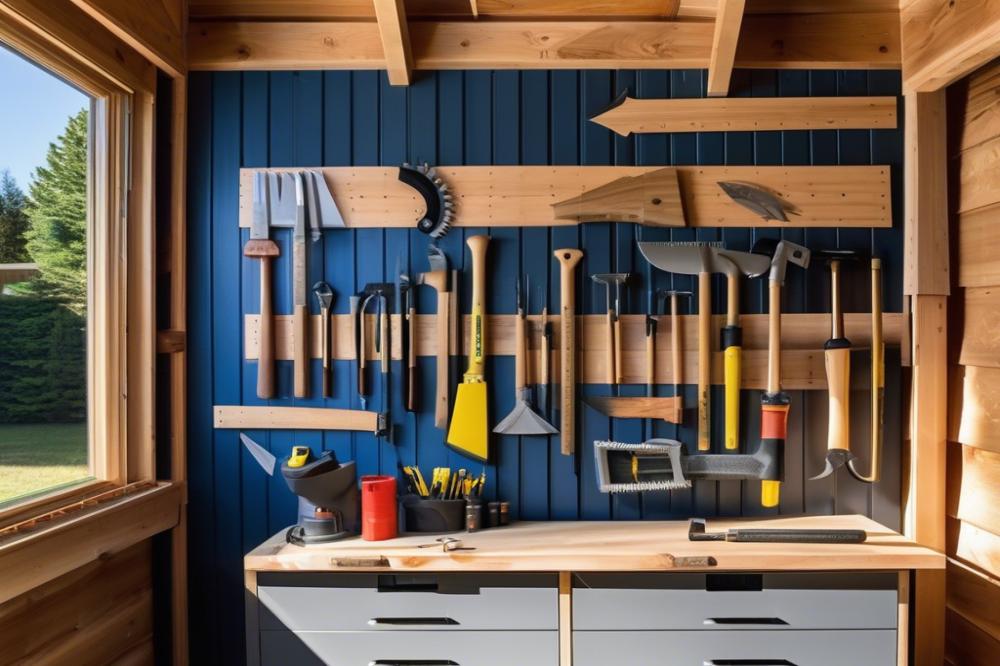Introduction
Building a shed can be an exciting project for many homeowners. However, understanding the importance of adhering to local building codes is crucial. These codes are designed to protect both you and your property. They encompass various aspects, such as building permits, safety requirements, and material specifications. Ignoring these regulations can lead to significant problems, including fines or the need to tear down your structure.
Familiarity with zoning laws is also essential. Each area has its own set of rules regarding how and where you can build. Knowing your property lines helps ensure that your shed doesn’t invade your neighbor’s space. Before starting any project, research is required. The inspection process can be a bit daunting, but it’s entirely necessary.
This article will guide you through the vital steps to create a shed that meets all applicable standards. We will cover necessary permits, construction standards, and proper shed design. Tips will be provided on outdoor storage solutions as well. With careful planning and attention to local regulations, your shed can be a valuable addition to your home improvement endeavors.
Understanding shed building codes
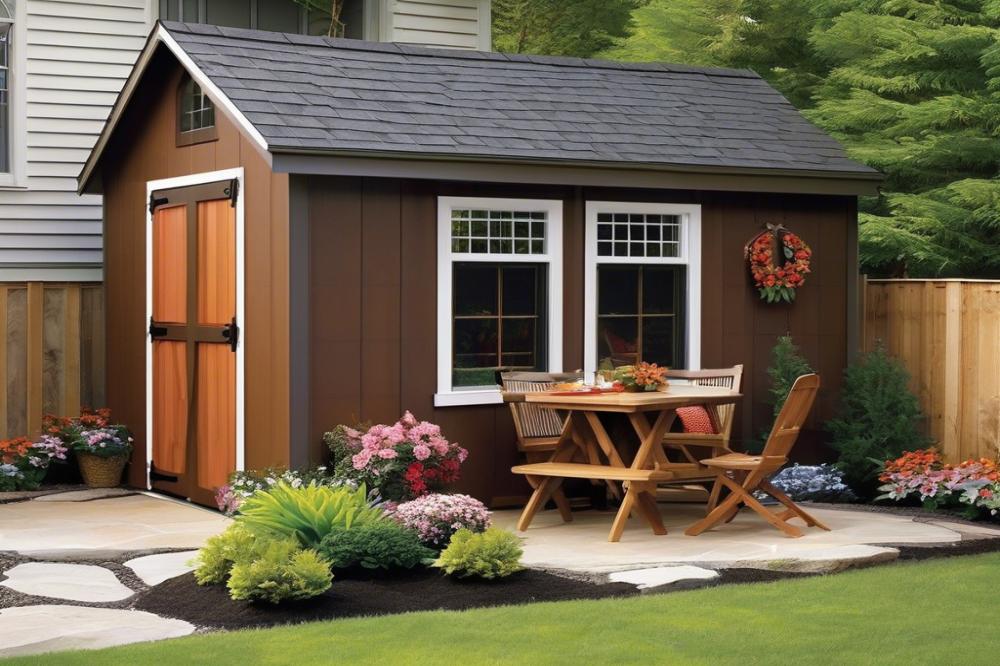
shed building codes are a set of regulations that outline the standards for constructing a shed. They include guidelines about various aspects of construction. These rules help ensure that buildings are safe and suitable for their intended uses.
Adhering to local codes is crucial for a number of reasons. Compliance safeguards against accidents that could arise from poor construction. Additionally, it helps you avoid fines or legal issues that may arise from unauthorized building work. Ignoring these regulations can lead to complications during the inspection process, where your shed may be deemed unsatisfactory. Notably, maintaining safety standards protects both the shed owner and the community.
Many components make up building codes associated with sheds. zoning laws dictate where a shed can be situated on your property. They often determine how far structures need to be from property lines. Material specifications address what types of materials are acceptable for construction. This includes factors like wood quality and insulation. Construction standards outline how to build a shed for durability and safety. Safety requirements often cover everything from structural integrity to fire safety. Each of these elements plays a significant role in the shed design process.
Before starting a project, it’s wise to check if you need building permits. These permits are often required for any outdoor storage structure. They serve as formal approvals for construction work, ensuring that your project complies with all regulations. Understanding these codes can save you trouble down the road. Learning the ins and outs of local regulations aids in successful home improvement efforts. Overall, being aware of these standards enhances your project’s legitimacy.
Navigating Building Permits and Zoning Laws
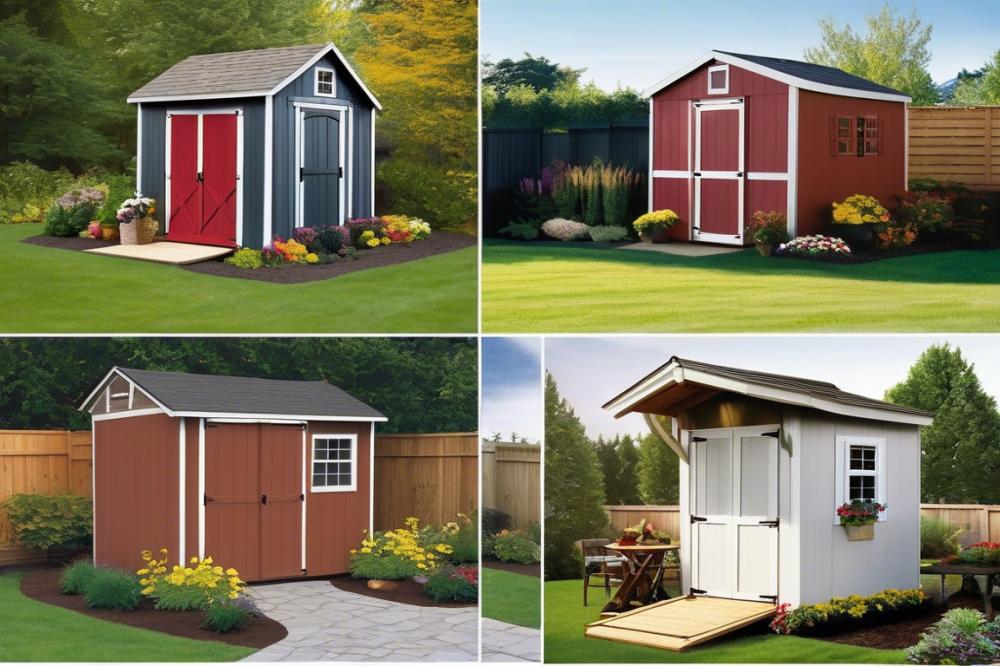
Building permits are often a crucial step in constructing a shed. These permits show that your project complies with local regulations. Many regions require them before you begin construction. You could face fines or even be forced to remove your shed if you don’t get one. Understanding what type of permit you need is essential. Each area has different rules regarding shed design and structure.
Zoning laws can significantly influence where you can place your shed. These laws dictate how land can be used in various zones within your community. Typically, they cover aspects such as building height, width, and type of use. If your property sits close to property lines, zoning laws might restrict where you can build. Knowing the local zoning regulations helps avoid conflicts with neighbors and local government.
To find out if you need a permit for your shed, start by contacting your local building department. They can provide guidance specific to your area. Some municipalities have clear thresholds. For example, smaller sheds might not require a permit, while larger ones do. Familiarize yourself with local safety requirements, material specifications, and construction standards. Often, the inspection process is mandatory once the shed is built, ensuring it meets all regulations.
Outdoor storage structures may seem straightforward, but legalities can complicate things. Each local authority has different expectations. Therefore, gathering all necessary information before starting can save you time and money. Research the regulations that apply to your project. This way, you can focus on your home improvement goals without worrying about compliance issues that could arise later.
Material Specifications and Construction Standards
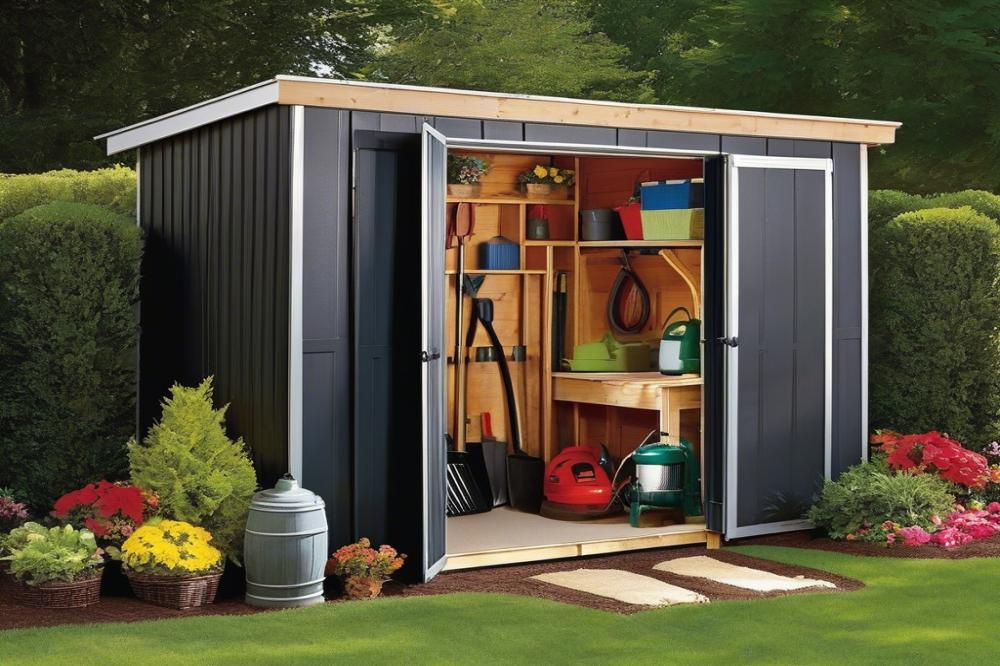
Building a shed that aligns with local regulations involves following specific material specifications. First, it is essential to know what materials are acceptable for construction. Many local building codes will outline permitted options. Common materials for walls might include plywood, metal, or vinyl. Each option has its benefits and drawbacks. Choosing the right material can affect not only the shed’s durability but also its compliance with safety requirements.
Construction standards come into play after you have selected your materials. Adhering to these standards is crucial for a safe and sturdy shed. These regulations generally cover everything from framing methods to roofing techniques. Inspectors may look for specific features during the inspection process. Non-compliance can lead to complications, including fines and required modifications.
Durability often hinges on the materials chosen. For example, pressure-treated wood tends to resist rot and insects, making it a favorable choice for sheds. Metals, like galvanized steel, offer exceptional longevity against the elements. Additionally, using high-quality roofing materials can protect against water damage. Depending on the climate, these can greatly affect your shed’s lifespan.
Before starting your project, check local zoning laws. Property lines are crucial in determining where your shed can stand. This ensures you avoid disputes with neighbors and maintain compliance with local regulations. When planning your shed design, balance aesthetics with functionality. Consider how the shed will fit within your landscape while providing adequate outdoor storage.
Finally, always keep home improvement standards at the forefront of your plans. Utilizing the best materials in the construction process will result in a more durable structure. That commitment to quality usually pays off in the long run. Remember, while building permits may seem tedious, they exist for a reason. Following local guidelines protects you and your investment.
Safety Requirements in shed construction
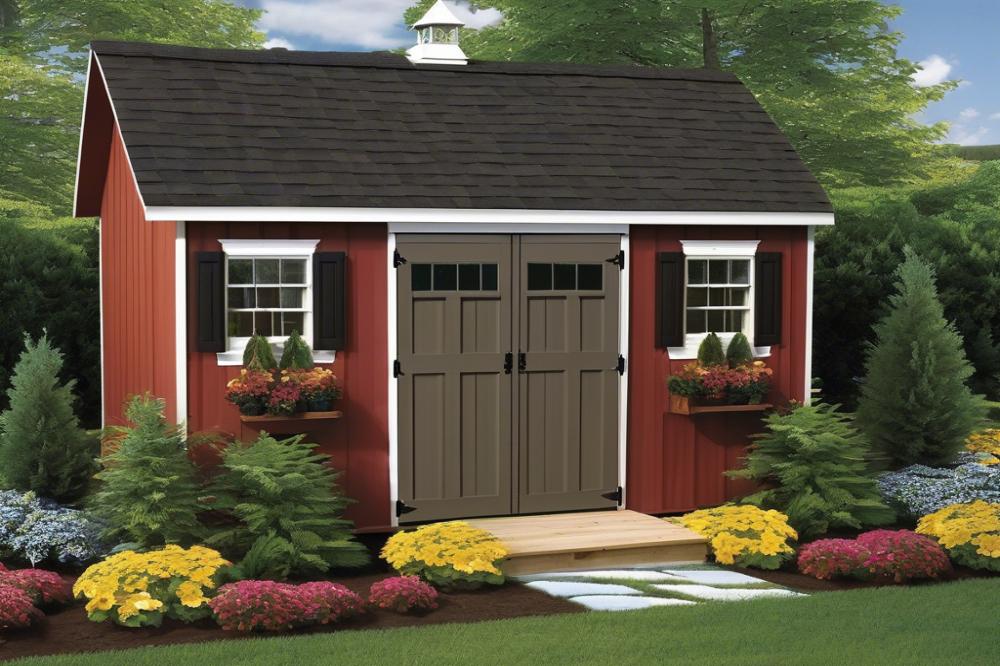
Building a shed can be an exciting project, but safety must always come first. During construction, various safety requirements apply. These guidelines are essential to protect you from harm while you work. Before starting, it’s crucial to check local regulations. Building permits and zoning laws can vary by area, so understanding them gives you a solid foundation.
Structural integrity is another primary concern. A well-built shed can resist harsh weather and wear over time. This means choosing the right materials and following construction standards. Make sure your shed design includes adequate support, especially if you plan to store heavy items. Fire safety is equally important. Keep flammable materials away from heat sources, and consider using fire-resistant materials whenever possible.
Tools and Equipment Safety Guidelines
Tools can be dangerous if not used properly. Always read and follow the manufacturer’s instructions for each tool. Protective gear, like gloves and goggles, is necessary when using power tools or sharp instruments. Regularly inspect your equipment to ensure everything is in good working condition. Pay attention to your surroundings as well. Keep the area clean and free of debris, especially near property lines and other structures.
During the assembly process, take your time. Rushing can lead to mistakes that might compromise safety. If you’re unsure about a specific part of the construction, ask for help. Neighbors or friends can offer valuable advice or support. Additionally, keep a first-aid kit handy just in case of minor accidents. The inspection process may also require you to demonstrate safety compliance, so having everything in order can save you time.
Take these safety requirements seriously. They play a pivotal role in successful home improvement projects. By planning ahead and following these guidelines, you can create an outdoor storage space that is both practical and secure.
Understanding Property Lines and Their Importance
Property lines are invisible boundaries that define the area you own. These lines determine where your property ends and your neighbor’s begins. Understanding their location is essential when planning your shed placement. Placing a shed too close to a property line can lead to disputes or even require removal.
Respecting the property of others is not just a good neighborly habit; it is also a legal obligation. Encroaching on someone else’s land, even slightly, may lead to complications. Disregarding property lines could result in conflicts with neighbors, which can sour relationships. Furthermore, many local authorities have strict rules regarding outdoor storage structures. A shed that’s too close to a boundary may not meet construction standards or required building permits.
Determining property lines accurately is crucial for any construction on your land. Start by reviewing your property deed, which usually includes a survey of the land. This document typically describes your property, including its dimensions and boundaries. If a survey is not available, consider hiring a professional surveyor. These experts use tools to define property lines precisely, avoiding potential issues later.
Sometimes, you may find markers such as stakes or fences that indicate the boundaries. However, these may not be entirely reliable. Zoning laws in your area might also provide additional information about set-back requirements and neighborhood regulations. Always check with your local government to verify codes and ensure compliance with all building requirements. Engage in this inspection process to minimize risks. Overall, knowing where you can and cannot build is vital for a successful home improvement project.
The Inspection Process Post-Construction
Undergoing an inspection is a crucial step after completing your shed. Local authorities evaluate structures based on various guidelines and regulations. This process checks compliance with building permits, zoning laws, and other important criteria. Understanding the expectations during an inspection can ease any anxiety you may have.
What to Expect During a Shed Inspection
During the inspection, an official will arrive to examine your work closely. They will review your shed design to ensure it meets the required construction standards and safety requirements. Expect them to look at the foundation, framing, and roofing materials. Additionally, they will check that the structure is built within property lines and adheres to material specifications. Keep handy any documents related to your project, as they might ask for verification of your building permits.
Importance of Passing Inspection for Compliance
Passing the inspection is vital for legal compliance. If your shed doesn’t meet the necessary codes, you may face fines or even be required to make changes. Non-compliance can lead to issues with home improvement permits or future property sales. Furthermore, failing the inspection can compromise the safety of your outdoor storage solutions. Ultimately, adhering to the inspection process protects your investment and ensures the longevity of your shed. Building a shed that meets regulations is not only about following rules; it’s about creating a safe and functional space.
Designing Your Shed Within Code Constraints
Creating a shed that meets local building codes requires careful planning. First, know your area’s zoning laws. These rules dictate how structures can be used and where they can be placed on your property. Consider the distance from property lines when planning. You should also check if building permits are necessary for your project. The type of shed you want may determine how strict the regulations will be.
Pay attention to material specifications as well. Certain areas might have guidelines about the types of materials you can use. These specifications aim to maintain safety and aesthetics in the neighborhood. You might find that wood is allowed while metal is not. Therefore, understand what fits your vision and meets local regulations.
Finding a balance between style and local construction standards can be tricky. Start with a design that you love. Then, modify it to comply with the rules. For instance, if the codes require specific roof heights, choose a style that accommodates those limits but still looks good. Look for inspiration in local architecture to make your shed blend with your home.
Popular Shed Designs That Comply with Local Codes
Several designs can suit your needs while adhering to building regulations. Gable roofs provide great water drainage, which might be required in your area. Lean-to sheds take up less space and often meet height restrictions easily. Another option is a barn-style shed. Its height can provide more storage, but be sure to check the local rules about overall height.
The inspection process for sheds may involve looking at the foundation and overall safety. Make sure your design allows easy access for inspectors. Regular compliance checks can help prevent costly modifications later. Your shed should fulfill its purpose for outdoor storage while satisfying safety requirements.
Overall, designing a shed can be both rewarding and challenging. With proper planning and knowledge of the requirements, you can create a fantastic addition to your property. Keep your focus on both functionality and local codes to enjoy all the benefits of your new structure.
Wrap-Up
In this discussion about constructing a shed, several important aspects have emerged. First, understanding local building requirements is essential. Knowledge of regulations can save time and effort in the long run. Familiarity with zoning laws will help clarify where you can build your shed without any issues. Additionally, checking whether you need building permits is vital before beginning any construction.
Pay close attention to the shed’s design. Some areas have specific guidelines regarding size and height. Adapt your plans to fit these parameters. Choosing the right materials can also meet aesthetic and durability standards while remaining compliant with regulations. Furthermore, consider the location of your shed; drainage and accessibility are critical factors that can be influenced by local conditions.
Keep these tips in mind for a successful build. Always research before starting. This will provide clarity and reduce challenges later. Consult with local building authorities when you have uncertainties. Their advice can simplify the process considerably. Maintaining thorough documentation of your plans will help during inspections.
Finally, approach your shed project with thorough planning and respect for local rules. Taking these steps will lead to a smoother construction experience and greater satisfaction with your finished shed. Your investment in following guidelines will pay off in the long run, making your shed both a functional and compliant addition to your property.



